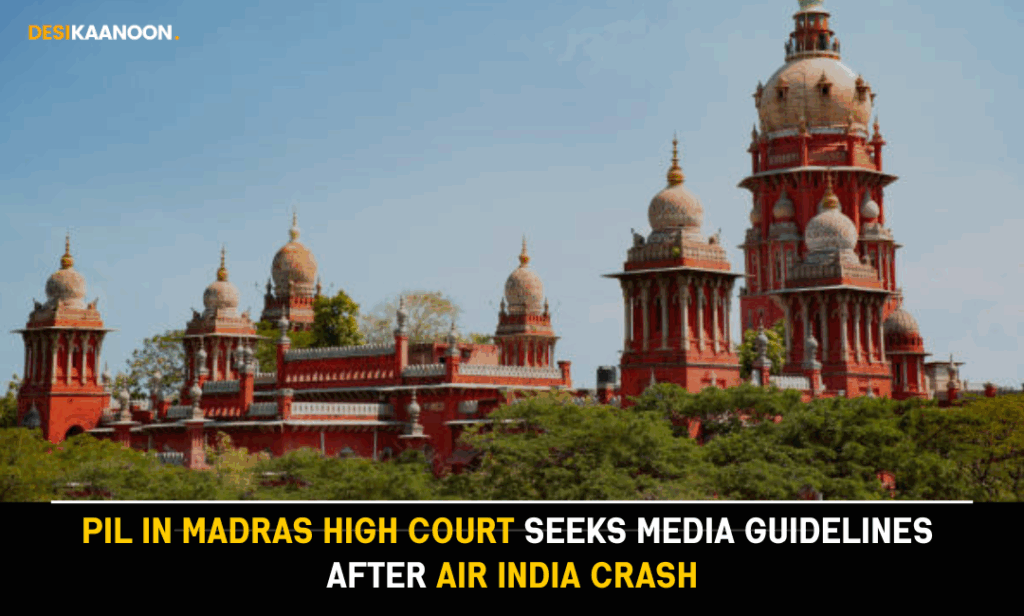Akhya Pandey
The aftermath of the tragic Air India Express crash near Ahmedabad on June 12, 2024, which killed 260 people, has triggered legal concerns over the media’s handling of aviation disasters.
On July 17, 2025, Advocate M. Pravin from Coimbatore filed a Public Interest Litigation (PIL) in the Madras High Court, urging the framing of strict media guidelines for reporting aviation accidents. The PIL is rooted in the aftermath of the Air India Express crash near Ahmedabad on June 12, which claimed 260 lives. It raises concerns over media narratives hastily blaming pilots before official findings are released.
The petitioner argues that many news reports, both on TV and social media, accused the pilots of negligence even before the Aircraft Accident Investigation Bureau (AAIB) or any technical agency had released findings. This, the PIL says, amounts to a serious violation of legal and constitutional rights.
Legal Grounds and Key Violations
The petition cites infringements of fundamental rights under the Constitution of India:
Article 14 – Denial of equal protection by singling out pilots unfairly in public narratives.
Article 19(1)(a) – Misuse of free speech when the media publishes unverified or defamatory content.
Article 21 – Violation of the right to life and personal dignity, especially for those unable to defend themselves posthumously.
The PIL stresses that the presumption of innocence, a core principle of law, is routinely overlooked when media outlets publish accusations before investigations conclude. Such coverage, it argues, not only harms the reputations of pilots and aviation staff but also adds to the trauma of grieving families.
Statutory Responsibility and Regulatory Gaps
The petitioner also draws attention to digital platforms and their legal obligations under the Information Technology Act, 2000 and the IT (Intermediary Guidelines and Digital Media Ethics Code) Rules, 2021. These rules require digital intermediaries to prevent the spread of false or harmful information. Yet, according to the petition, there is no effective framework in place to ensure that this is done in the sensitive context of aviation disasters.
It also notes that while the Directorate General of Civil Aviation (DGCA) and the Ministry of Civil Aviation issue procedural directions for aircraft operations, they lack enforceable standards for how such incidents are reported in the media.
What the Petition Seeks
The PIL asks the High Court to:
• Direct authorities to issue binding guidelines for media coverage of aviation accidents.
• Ensure the confidentiality of pilot identities during investigations.
• Regulate media trials and restrict speculative reporting until factual findings are released.
• Instruct the Ministry of Electronics and Information Technology (MeitY), the DGCA, and other agencies to implement protocols protecting the dignity of victims and professionals alike.
Why This Case Matters
This petition raises important questions about how far media freedom can go during moments of national tragedy. It’s not an attempt to silence the press, but to ensure that reporting stays fair, factual, and respectful, -especially when lives are lost and reputations are on the line. If the court issues directions, it could lead to clearer boundaries for media conduct and better safeguards for aviation professionals and grieving families during ongoing investigations.
Instagram: Click Here. LinkedIn: Click Here. For Collaboration and Business: Click Here.

